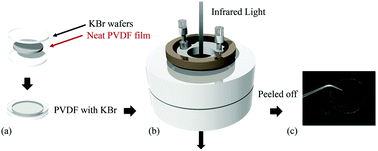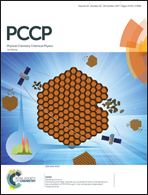Crystallographic features of poly(vinylidene fluoride) film upon an attractive substrate of KBr
Abstract
Among all the polymorphs of poly(vinylidene fluoride) (PVDF), the polar γ-form possesses the highest melting point and electrical breakdown strength as well as the strongest solvent and irradiation resistance, which are beneficial for the durability of PVDF products. Since the γ-form is neither kinetically favorable nor the most thermodynamically stable, it is still difficult to attain the exclusive γ-polymorph, particularly in the case of neat PVDF. In this study, the melt isothermal crystallization of PVDF films was carried out between two KBr wafers. Owing to the characteristics of KBr wafer, including no IR absorbance and high optical transmittance, the crystallographic features originating from the KBr substrate can be conveniently elucidated through the in situ inspected techniques of FTIR and PLM. The KBr wafers significantly accelerated the crystallization kinetics of α-crystals, and then readily triggered the solid-state α- to γ-transformation of the pre-formed α-spherulites, resulting in a 10 μm-thick, neat PVDF film with an absolute crystallinity of 35% and a relative γ fraction as high as 94%. When the film thickness was increased to 40 μm, the crystallization rate of the α-form was still rapid, but the solid-state transformation was not appreciable. These interesting crystallographic phenomena are attributed to the existence of ion–dipole interaction between the –CF2 or –CH2 of PVDF chains and the surface of KBr wafer. Unlike most traditional substrate-dominated crystallizations that prevail in a surface epitaxy manner, in which the target films are of ultra-thin thickness (of the order of 10 nm), the ion–dipole interaction promotes the effective thickness to a ten micron level, which enables its production and application at scalable level. Moreover, the triggering of α- to γ-transformation via external fields could be an alternative for achieving the γ-dominant PVDF products, particularly when the introduction of external additives is prohibited.



 Please wait while we load your content...
Please wait while we load your content...